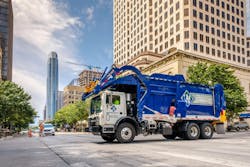Vision RNG Converting LFG to RNG at Waste Connections Landfill and Building 2 Additional Facilities in Oklahoma
Vision RNG, a developer, owner, and operator of landfill gas (LFG) to renewable natural gas (RNG) facilities, and Waste Connections, a solid waste services provider, have partnered on a project to convert LFG to RNG at the latter’s Southern Plains landfill in Grady County and build two additional RNG facilities at its Red Carpet and Osage Landfills in Oklahoma.
The partners expect the first project to produce more than 370,000 MMBtu of RNG annually. The project is also anticipated to avoid more than 16,464 tons of fossil-based CO2 emissions annually, once completed. Additionally, the LFG-to-RNG project will create construction jobs and full-time plant operator positions.
LFG is a natural byproduct of decomposing landfill waste, and it is typically collected and flared to burn off the contained methane as required by regulators.
However, the collection and conversion of methane from LFG into a cleaner, renewable fuel following planned practices of Vision RNG and Waste Connections at the Oklahoma landfill aims to reduce the need for the combustion of new fossil fuels.
“We’re committed to being part of the solution to global warming by developing projects that safely convert greenhouse gas waste emissions into clean renewable energy,” said Bill Johnson, CEO of Vision RNG.





